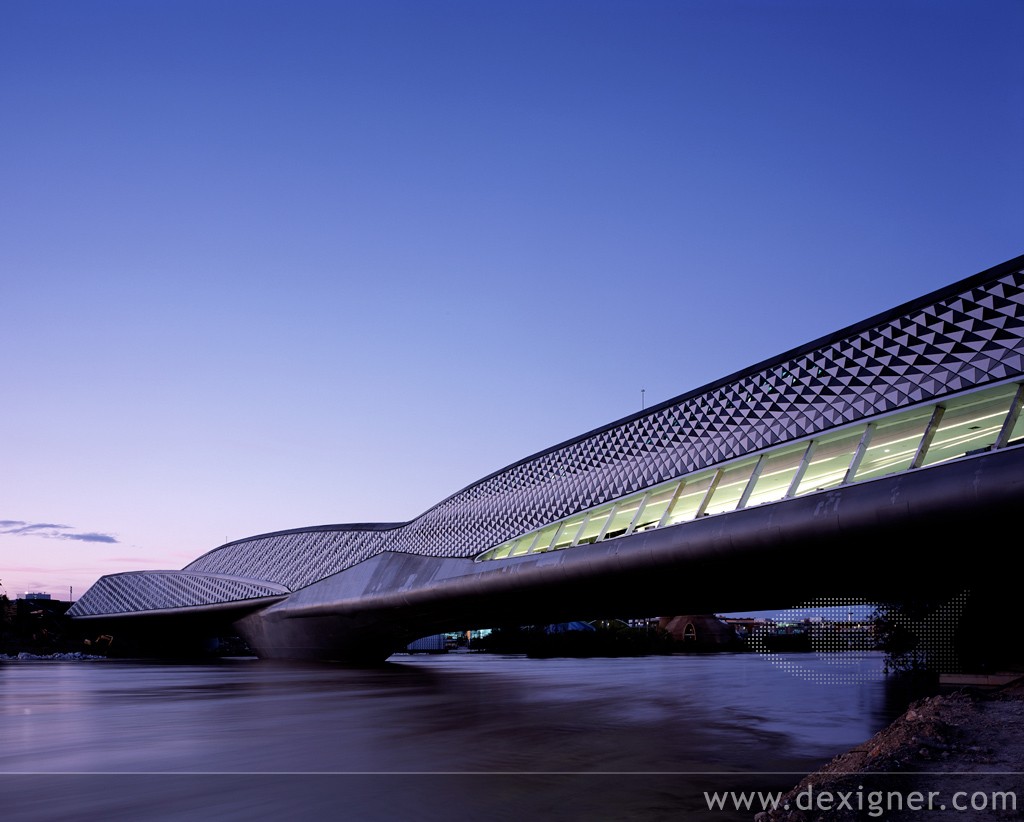

Design – Inspired by Nature
The pavilion bridge is also a symbolic building, because the Expo slogan “Water and Sustainability“ was translated into the design and the material of the construction. The bridge is slightly curved and its gently flowing, rolling form is based on the natural conditions of water. “The Zaragoza Bridge Pavilion“ consists of four elements, which overlap each other like petals and form a diamond in the cross section. Inspired by the infinite formal variety of nature the pavilion opens up towards the exhibition bank in the style of a gladiolus.
A Shimmering Outer Skin
For the outer skin of the “Zaragoza Bridge Pavilion“, Zaha Hadid has chosen triangular plates out of [fibreC] glass fiber concrete. A sophisticated pattern out of 29.000 glass-fiber reinforced concrete plates in different grey tones produces an effect like shiny fish scales. Through their unbelievably dimensional effect, the [fibreC] triangles imbue the outer skin of the pavilion with life, reflecting the glittering and multiple facets of the water.
[fibreC]——A Sustainable Material
Apart from its design and visual impact, Zaha Hadid´s project could stand up to 40 competitors at the jury - not least due to the sustainability of the used materials like [fibreC]. “The composition of [fibreC] out of degradable, purely mineral raw materials entirely complies with the trend of natural, eco-friendly and sustainable materials“, CEO Wolfgang Rieder says. This innovative material enables big creative freedom in terms of mouldability, colour and processing. “Today, the material [fibreC] meets architectural challenges, which apparently made impossible to employ concrete still a few years ago“, Rieder says. “The example of the Zaragoza bridge shows that 29,000 different triangular forms with accurately defined radiants can be manufactured industrially. With this technical precision and the logistic complexity Rieder breaks new ground in the world of concrete production.“







 cityup.org 传真电话:010-88585380
cityup.org 传真电话:010-88585380